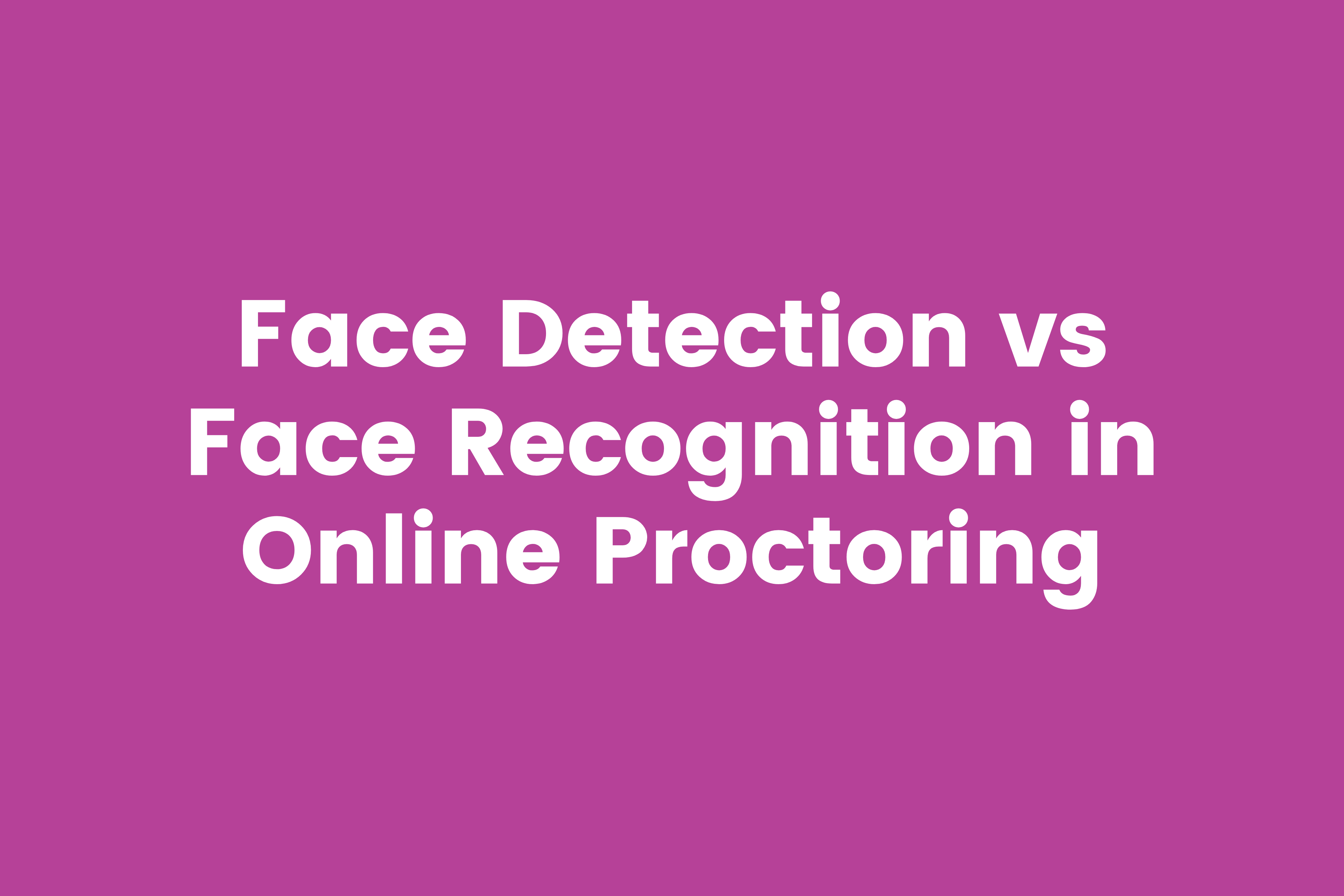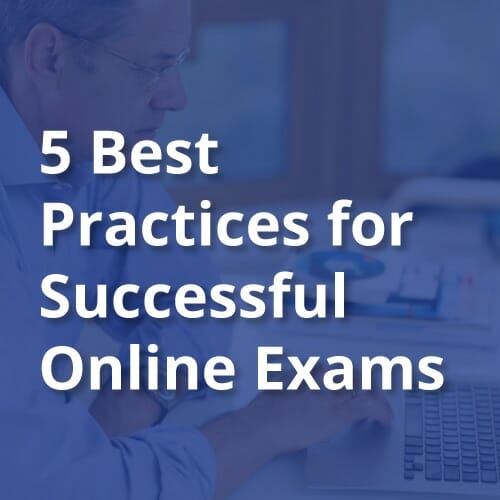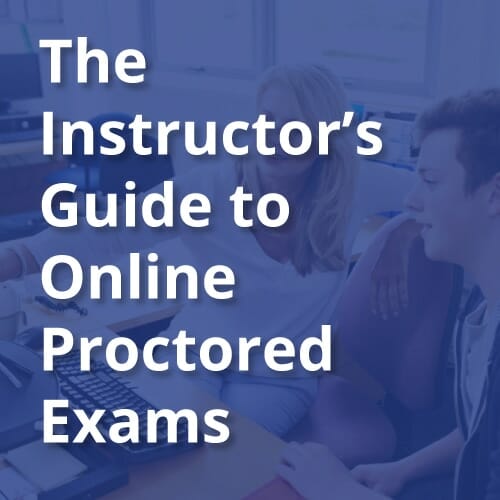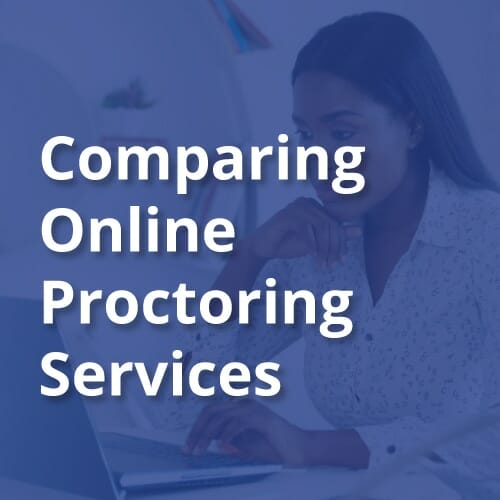As face detection and facial recognition software become increasingly dynamic, people are understandably concerned about their privacy, and those taking online proctored exams have reported various negative experiences.
There are key differences between face detection and face recognition, and it’s important to be able to distinguish between the two, as both are used to varying degrees by online proctoring service providers.
For example, some online proctoring services use face detection while others use “continuous facial recognition” throughout the entire exam, which may be invasive and pose privacy and data issues.”
Comparing face detection and face recognition
What is face detection?
Face detection uses AI technology that can determine when human faces appear in images. It uses algorithms to analyze and to separate faces from all the other features that may be present in an image—the baseline goal is to distinguish your face from a stop sign, for example, or from the adorable mug with your dog’s face on it.
Broader than face recognition
Face detection as a concept includes face recognition in some instances. If a system can isolate a face from the rest of an image, then it qualifies as “face detection.” But facial recognition is more specific and is just one of a range of capabilities under the rubric of face detection. Facial recognition uses biometric technology not just to recognize when a human face is present, but also to determine the identity of the person.
How face detection works
Our eyes, standing out as they do, are the first objects that face detection algorithms usually search for. The algorithm will then seek other features of our faces, and when it finds them it compares what it thinks is a face to large databases that definitely contain faces—as well as non-face images to make sure the algorithm is working properly.
The AI is essentially “trained” to identify whether images and videos contain faces or not. This training uses a seemingly endless number of images and video – some containing faces while others don’t – to help ensure ongoing improvements and overall accuracy.
What is face recognition?
Face recognition is one of the most significant applications of face detection. It’s able to capture someone’s image and know exactly who that person is. The technology isn’t 100% perfected yet, but if your image is already in a database, there’s a good chance that the owner of the database will be able to identify you.
What are the differences between how they work?
The steps below highlight the differences between how face detection and face recognition work. You’ll notice that face recognition goes beyond simply identifying that a face is present.
Face detection

How is face detection used in online proctoring?
If you are concerned about the implications of facial recognition technology when it comes to proctoring online exams, we at Honorlock understand.
Honorlock does not use face recognition
We use face detection, which only detects that there is a clear human face in the webcam.
We do NOT identify any individual face, store facial elements, or match the face to a database. If no face is detected, however, or if multiple faces are detected, AI will flag the incident and a human proctor may intervene.
Safe for everyone involved
We take data privacy seriously. All data is secured. Data in transit and data at rest is encrypted and stored on the cloud in an Amazon (AWS) data center. Amazon’s data centers are SOC 3 certified, U.S. Privacy Shield, and General Data Protection Regulation (GDPR) compliant.
Facial detection is just one of the many online proctoring features that Honorlock uses to make sure test takers have a positive and secure remote testing experience. When you compare online proctoring services, be sure to check whether face detection is being used, rather than the more problematic face recognition.
Speak with our online proctoring experts to see how Honorlock works.
Sign up below to receive more resources for tips, best practices, white papers, and industry trends
The eBook covers everything you need to know about establishing and using diversity, equity, and inclusion in your online classes.










